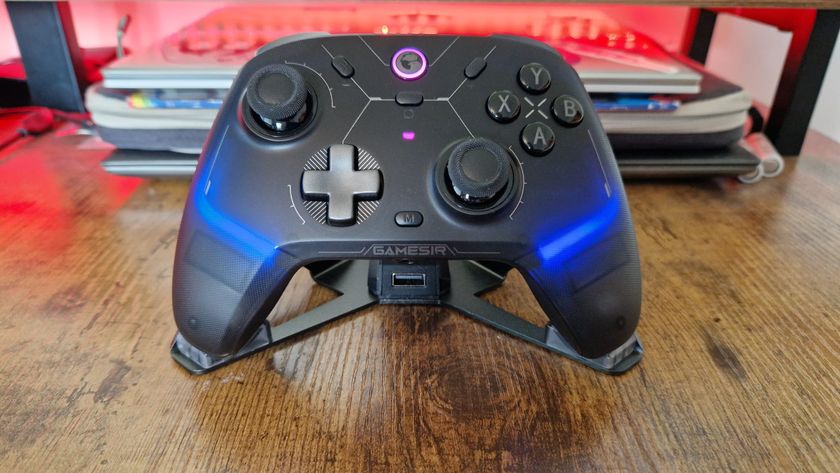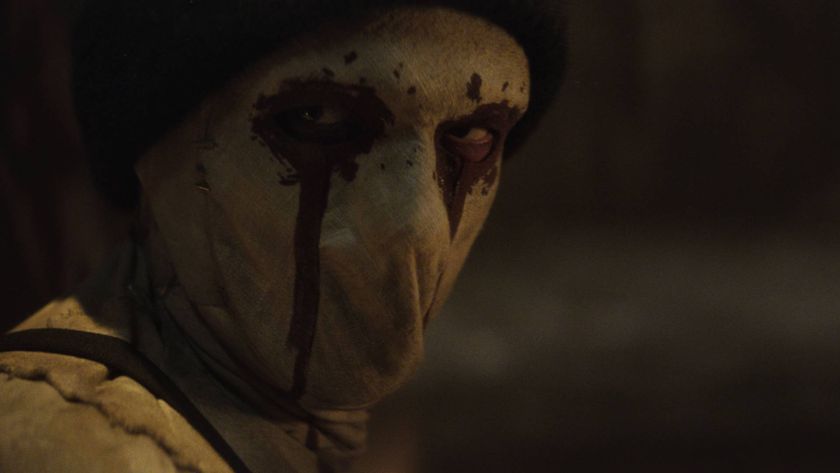10 gaming fads that aren't around anymore
Back in my day
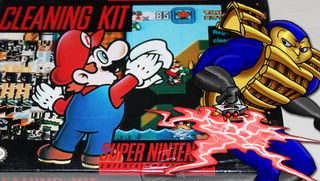
Rose-tinted glasses; nostalgia; a desperate clinging to what you remember in the face of constant change. Whatever you want to call it, reflection on the best bits of yesteryear can be a powerful force. Yes, previous eras of gaming were rife with problems only a '90s gamer could understand--but they were also times of joy, full of gaming experiences that simply don't exist anymore. If you lived through these, I bet you remember them fondly. If you're part of the newer generation, you deserve to know what you missed.
Growing up in the '90s, I was fortunate enough to witness a ton of gaming trends that, for whatever reason, simply don't exist anymore--at least, not like they used to. And I'm willing to bet that all you readers in your 20s and 30s know what I'm talking about. Let's reminiscence about those bygone bits of gaming culture together, shall we? Just try not to get too curmudgeonly about the current state of affairs, and how these young whippersnappers have it easy.
Blockbuster exclusives
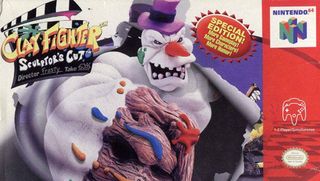
Back then: When cartridge-based consoles ruled the roost and the aftermarket at EB Games or GameStop didn't yet exist, renting video games was all the rage. It was the ideal way to try before you buy, giving you a weekend to demo (or possibly even beat) a game before your parents returned it with their VHS tapes. And to sweeten the deal, Blockbuster sometimes worked with publishers to get exclusive content, either with enhanced versions you couldn't find in stores (Clayfighter 63 1/3: Sculptor's Cut, Final Fight Guy) or even entire games that were rental-only (Hagane: The Final Conflict, Razor Freestyle Scooter on N64). The closest you could get to owning these games was to rent them over and over, or attempt to get away with the ol' five-finger discount.
Nowadays: Blockbuster is dead, and developers would rather just make widely accessible DLC instead of giving GameFly a chunk of exclusive content. Actually, that's probably for the best, because those Blockbuster exclusive games are now insanely expensive and hard to find, or dirt cheap and all but worthless.
Hint hotlines
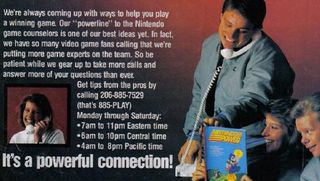
Back then: Stuck in a game? Well, shoot. In the time before GameFAQs and Let's Plays on YouTube, figuring out how to progress past a video game stumbling block was tricky business. You essentially had to spend $20 on a strategy guide, rely on advice from a friend who had already beaten the game, or hope that Nintendo Power decided to write a blurb explaining how to overcome your exact predicament. Alternatively, you could call up a hint hotline that would walk you through the obstacle step-by-step, all while monopolizing your house's only phone line. It's a win-win!
Nowadays: The existence of the magical portal called the Internet had rendered these hint services useless--websites like GamesRadar have all the hints, tricks, and tips you need (my boss made me say that)! If you're unfathomably bored, you can try calling these long-abandoned numbers today and see where they go. Or, if you ever used them in the past, see if your call became a legend of hint hotline stupidity.
Demo discs
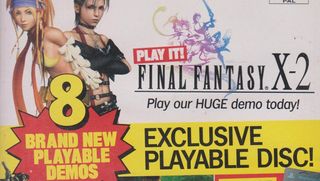
Back then: Getting the latest issue of Official PlayStation Magazine was such a treat. Oh sure, the articles, reviews, and columns were great--but the icing on the proverbial cake was the CD-ROM in the back of the plastic-wrap packaging. Pop this sucker into your PlayStation, and you'd have instant access a suite of seven or eight game demos, plus extras. These demos usually spanned a range of genres, with a headliner, big-name game bolstered by lesser-known releases--and while they all varied in length, you were all but guaranteed to get hours of free entertainment. After you had repeatedly played through all the demos, you could even find trailers (this was pre-YouTube, mind you) or tricked-out save files you could copy straight to your Memory Card. Incredible.
Sign up to the 12DOVE Newsletter
Weekly digests, tales from the communities you love, and more
Nowadays:Production costs and the waning of print media have sadly made demo discs impractical. In their place, console demos can be downloaded day-and-date from PlayStation Network, Xbox Live, and Nintendo eShop. Convenient? Yes. Exciting? No--and lengthy download times or install sizes usually deter people from giving unfamiliar demos a try. Oftentimes, in the olden days, those weird, obscure game demos ended up being some of the best ones.
Physical DRM
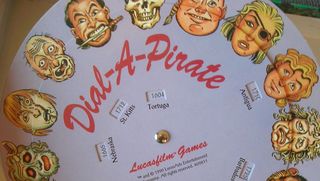
Back then: If an educational video couldn't convince you not to copy that floppy, you were a massive threat to the earnings of hard-working game developers. In an effort to combat rampant piracy, developers had to devise clever ways to verify paying customers, before always-online DRM was a thing. PC games often came with "feelies," an affectionate term for any physical objects included the game box that could also double as copy protection. You've probably heard of Monkey Island's Dial-A-Pirate solution; other famous examples include a King's Quest 3 puzzle that required the manual and Worms' black ink-on-black paper code sheet that was basically impossible to photocopy. Even if these didn't have a 100 percent success rate, there's no denying that they were darn crafty.
Nowadays: Piracy is a nearly unstoppable force, with no form of DRM able to stand up against the will of a thousand stingy hackers. But developers have still found creative solutions for giving game pirates a real bad time, like gimping Batman during Batman: Arkham Asylum, torturing the player with unkillable pursuers in Dark Souls and Serious Sam 3, or the subtle and gradual deterioration of game code as seen in Arma 2's FADE system.
Gathering paper slips in the Toys 'R Us games aisle
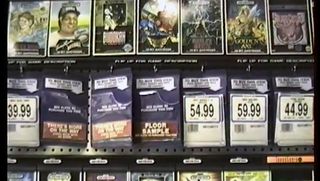
Back then: You could look, but you couldn't touch. The gaming section of Toys 'R Us during the '90s was sensory overload to young gamers: rows upon rows of Super Nintendo, Game Boy, and Sega Genesis box art as far as the eye could see. And that box art was literally all you had to go on if you were considering a purchase, because it was only sample boxes on display. Your choice was a big deal, because you probably couldn't buy games without the aid of birthday or holiday bonuses. Once you made your pick, you simply grabbed a representative slip of paper and took it to the cashier, who would dip into a top-secret, mirrored-glass room to snag a copy of the respective game. The clandestine contents of that room were more valuable than a Swiss bank vault to most gamers.
Nowadays: You need the cashier to come to you, so they can begrudgingly unlock the sliding glass display case for the millionth time that day and liberate your copy of the game from its garish plastic casing. That, or you're getting a pre-opened box and fingerprint-covered game at GameStop. Power to the player!
Games as cereal box prizes

Back then: Remember Chex Quest? This seemingly innocuous CD-ROM, which came packaged with boxes of Chex cereal, actually changed lives. Instead of a crappy plastic toy or some temporary tattoos, kids that ate a balanced breakfast were rewarded with a nonviolent, reskinned clone of Doom. That's about as incredible as a cereal box pack-in promotion can get. This trend wasn't limited to Chex, either--you might remember such extras as Sonny's Race for the Chocolatey Taste (Cocoa Puffs) and Cap'n Crunch's Crunchling Adventure (Cap'n Crunch). Getting a free game was already exciting as all get out--and if it was actually good, as with Chex Quest, it could transcend its cereal-based roots to become the stuff of legends.
Nowadays: Instead of physical media, you might get a code for a game that pales in comparison to the thousands of free, readily available Flash games out there. Unless you were lucky enough to get a box of Komrad Krunch cereal in the mail, which contained a floppy disk with Jazzpunk on it (in the form of a Steam code, but still, that's awesome).
Phone-style pinpads on arcade machines

Back then: Arcade games could be so fleeting, instantly forgetting you ever played (unless you were good enough to make the high score list). But what if there was some way you could save your progress, working towards long-term rewards and goals beyond a single race or continue? Midway Games found an ingenious method to make this work: give new players the option to punch in a custom PIN code, so the machine could track your stats. Entering your PIN to pick up where you left off was a cinch, thanks to the telephone-style keypad on the machine. Midway cabinets like Cruis'n Exotica, San Francisco Rush 2049, and The Grid used this trick to awesome effect, and provided mild amusement even when you weren't actually playing.
Nowadays: Japanese arcade games, particularly the Bemani series, have improved upon this idea with personalized data cards in place of keypads. Meanwhile, Western arcade games have been much ceased production entirely.
Gaming magazines as thick as Bibles
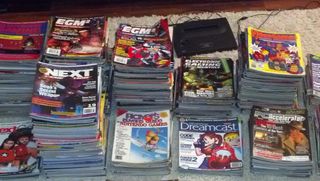
Back then: Before the Internet (specifically GamesRadar) became the go-to place for gaming news, previews, and reviews, magazines like Game Players, GamePro and Electronic Gaming Monthly were like holy scriptures to gamers. And these mags had heft like you wouldn't believe, with some issues nearing or surpassing a 200-page count. How was this possible? The ads. Yes, the editors wrote quite a bit--but between each original article were pages and pages of advertisements, from two-page spreads to catalog hotlines and everything in between. And since this was usually your first exposure to many of these titles, these ads were actually pretty pleasant additions to the content mix. Except when they were insanely off-putting.
Nowadays: All the money's online, so magazine space is becoming increasingly less attractive to advertisers. In their place are banner ads on every webpage, which have a 60 percent chance of showing you a scantily clad woman instead of anything resembling actual gameplay. Touch me now, my lord--MEN ONLY.
Cartridge cleaning kits
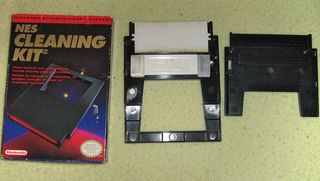
Back then: Game cartridges are designed in such a way that exposes the cartridge contacts to open air. If you neglected to put your games back in their boxes or in a protector, all kinds of bad news was bound to occur. Dirt, dust, and general griminess was bound to get into the cartridge slot--and the common solution of blowing air into the plastic slot was actually a contributing factor to cartridge failure. Experts knew to skip all that frustration and go straight to the cleaning kit when their game refused to start up. These usually included a special cleaning solution, applied via delicate cloth or cotton swabs; if used correctly, they could easily restore your game cartridge's contacts or system's pins to pristine working order. That, or you messed it up and accidentally destroyed your cartridge forever.
Nowadays: These are actually still some for sale, but they're nowhere near as prevalent as before (mainly because people figured out that some rubbing alcohol and online DIY guides do the job just fine). There are disc cleaning kits these days--but let's be honest, you're just going to use the breath-and-shirt-shine combo that you always do.
Corny gaming commercials

Back then: I have no idea if they made people actually buy games, but game commercials used to be so creative. Usually, that creativity manifested itself as a form of advertising that made little to no sense. Case in point: the ads for classic The Legend of Zelda games, which came in borderline exasperating Western mugging and hip but nonsensical Japanese dance battles. Or the PlayStation ads starring a goofball in a Crash Bandicoot suit accosting strangers. These all made little to no sense, but they had moxie. If you were lucky, you got an indecipherable, quick-cut montage of gameplay added at the end--but these ads worked in that they were undeniably memorable for many gamers.
Nowadays: It's all pre-rendered cinematics and cutscenes, usually set to ill-fitting music. There are exceptions, like the recent "My Shadow and Me" Titanfall live-action ad. But despite being undeniably awesome, well-produced ads like these just don't have that bizarre eccentricity of the '80s and '90s game ads.
Fond memories

Those are the fads we get all nostalgic over--though admittedly, these ideas probably belong in the past. And hey, who knows what modern-day gaming practices will be gone 20 years from now? Before we resume living in the moment, which '80s and '90s gaming fads do you hold close to your heart? Let's have a nostalgia party in the comments below.
And if you're looking for more, check out Problems only a '90s gamer could understand and The awkward prototypes of gaming's iconic heroes.
Lucas Sullivan is the former US Managing Editor of 12DOVE. Lucas spent seven years working for GR, starting as an Associate Editor in 2012 before climbing the ranks. He left us in 2019 to pursue a career path on the other side of the fence, joining 2K Games as a Global Content Manager. Lucas doesn't get to write about games like Borderlands and Mafia anymore, but he does get to help make and market them.

Assassin's Creed Shadows director says the dreaded yellow paint was only added because "players were really struggling in playtests"

Assassin's Creed Shadows was originally envisioned without Yasuke, but Ubisoft wanted the full feudal fantasy: "We were sort of making a stealth tank, and it didn't quite work"

